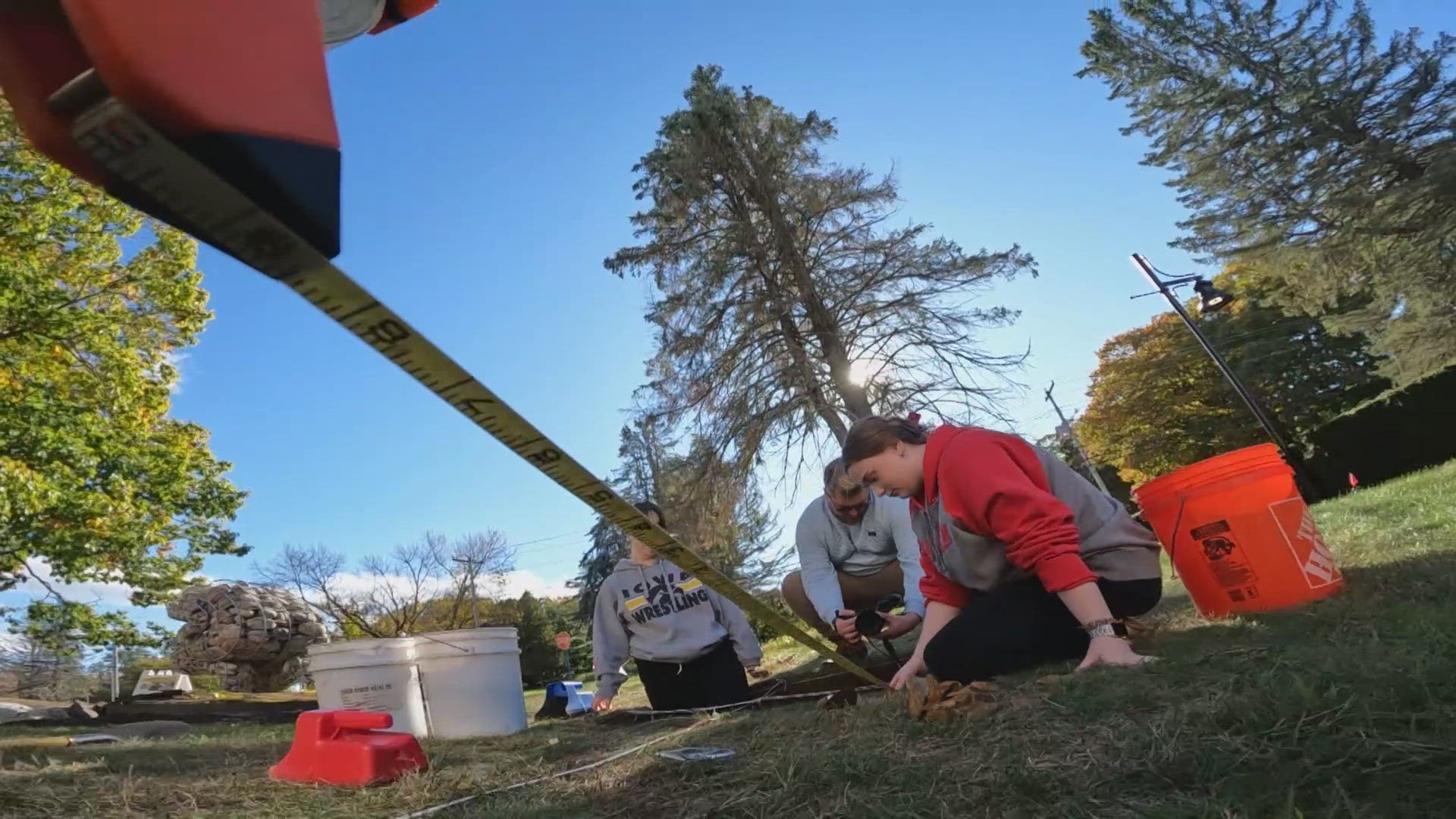BIDDEFORD, Maine — When a history class gets to go outside to learn, that's an accomplishment.
When the lesson is in the ground, now we're talking.
At the University of New England's Biddeford campus, Professors Arthur Anderson and Eric Zuelow led eager students through an archeological dig that originated from some old photos of buildings lost to time.
One building, called "The Wayside," was built in the 1880s and torn down to expand a growing college campus in 1963. There was little known about what happened in this home.
"It turns out that it's kind of an exciting story," Zuelow grinned, while his students dug away behind him. "We have a family turmoil of potential rum running; maybe some illicit activity; a whole host of different things going on here with an interesting cast of characters, and we're peeling it away bit by bit."
And so, with visions of rum running in their heads, the students measured, dug, and sifted through soil. When I visited, on their last official outdoor work day of the semester, one group uncovered a significant chunk of the building's foundation. I heard yells from another team of students and hurried over to see the cause. A young man held up a fully intact brick - not dissimilar to any other average brick, but worthy of celebration given the circumstances.
Nearby, psychology major Meredith Bailey held up a hand-forged nail, a prime discovery given its obvious age.
"It's a lot of work but it's really fun, rewarding, and I'm happy I decided to take it," Bailey said of the history course.
"My background is in European history, and when I want to teach my subject, it's very hard to do hands-on projects, because the sort of stuff I would get them looking at is a couple thousand miles away," Zuelow explained. "With a project like this, it's very visceral. You can get students right into it, doing a project related to a place that they thought they knew, and uncovering that they really didn't know anything. And that is, arguably, one of the most important lessons you can learn in college, I think."
State team uncovers free Black community
However, student Marissa Carter let us know, this wasn't even the most interesting archeological dig happening in southern Maine.
"There was a tour opportunity at this site in Kennebunk that was a free Black community in Kennebunk that they're now excavating," Carter said. The senior marine biology student also had a geographic information systems minor, and had fallen in love with archeology.
About a 20-minute drive south on Route 1, Leith Smith met me at the head of a nondescript trail near the end of an ongoing housing development.
He made it clear I should not tell the public where exactly his work was being conducted, for fear of looters or other ne'er-do-wells rummaging through the site. He led us down the trail until we came upon two of his colleagues, carefully studying the ground with instruments and taking notes.
Smith is an archeologist for the state of Maine, on a mission to uncover a free Black community, settled shortly after Massachusetts abolished slavery in 1783, and lasting until the last resident died around 1831.
Over the summer and early fall, Smith's team uncovered clear signs of structures and artifacts. He's excited about this work because, he said, despite being a very white state, a lot of Maine's history includes Black Mainers. And some of that history is still unwritten.
What they do know is, these Mainers built homes together with lumber and stone fireplaces they had to cart in. They built a neighborhood and became part of their larger community.
"In the case here, there are some church records where we know, probably, some people from this community attended church in town," Smith explained.
Now a Universalist Unitarian church, the very building these Mainers attended still stands, and is a prominent piece of downtown Kennebunk along Route 1. A caretaker let me in and said she had heard about these members joining the congregation all those years ago. She led me to the back of the building and opened a small door, revealing what can be described as a vertical shaft, barely wide enough to fit through, leading up into the belfry.
Even after walking a mile and a half to the church to pray, the white parishioners made their Black neighbors climb up into the belfry, out of sight, and sit behind the massive pipe organ. Their small view is now boarded up, but there is still an outline in the wall where their pew was built.
The Black community was free from slavery in Maine, but not from persecution.
In Kennebunk and Biddeford, both teams packed it in for the winter, studied their haul, and plotted out what other mysteries might remain hidden in the ground.

